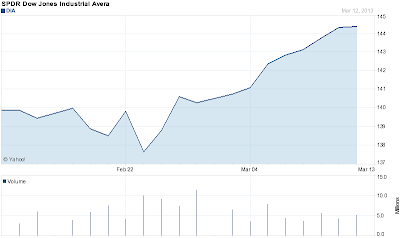The Diabolical Deadline of the Rating Agencies
Our founder earned clients a 23% average annual return over five years as a stock analyst on Wall Street. "The Greek" has written for institutional newsletters, Businessweek, Real Money, Seeking Alpha and others, while also appearing across TV and radio. While writing for Wall Street Greek, Mr. Kaminis presciently warned of the financial crisis.
You see, with one fell swoop, Standard & Poor’s, of McGraw-Hill (Nasdaq: MHFI), or Moody’s (NYSE: MCO) or Fitch could easily shock the market. If two of the above were to downgrade the sovereign rating of the United States, the effect could be as bad as a default on payments to our creditors, if not worse. The impact would be global too and I expect quite apocalyptic. So I curiously wonder here if that biblical demon of old referred to as the Anti-Christ in the Book of Revelations might in fact be Standard & Poor’s and its fellow rating agencies. Unfortunately, such impossible word play seems to gain disturbing credence when we recall the fact that on March 6, 2009, the market index by the same name stopped at an intraday bottom value of precisely $666. It was the low point of the financial crisis, but was it also meaningful for “the one who has understanding?”
You’ll recall the uproar when S&P downgraded America’s credit rating last year; it was for the very reason I speak of here. Yet, there was no catastrophic impact to our nation’s borrowing capacity or to interest rates. Why is that? Because unless two or more rating agencies cut America’s AAA credit rating, all the mutual funds and other funds bound by charter to own triple-A credits would not have to sell their core holdings of U.S. treasuries; nor those of municipalities which would be overcome by the fall of the parent nation’s rating; nor those of the corporations which run out of the land of the free. Neither would our nation need to offer a more appealing yield to sell debt, and so raise all interest rates and cut the dollar at its knees. But if two rating agencies do act in concert this time around, then we may be done for.
I was not surprised Tuesday to hear Senator Reid warn that the rating agencies were very likely already at work on a plan of action. The Democratic Leader indicated that a downgrade could come as early as Tuesday evening. Indeed, Fitch later warned that it might cut our AAA rating. My friends, if this scenario is about to play out, we as a people should be taking it as seriously as we would nuclear missiles in the air. Actually, I believe we should be taking it even more seriously than we would that nightmarish plot. I would go so far as to call it treasonous to allow this situation to reach the midnight hour, and I would place those at fault into custody for such an inexcusable underestimation of risk. Ignorance is no excuse here; an appropriate anomaly might be a clumsy government representative accidentally hitting the red button. How would he pay for that mistake? Wouldn’t it be too late anyway? If we can stop the failure before it occurs, we should. The President must intervene in this case, and ensure the government does not ruin our nation.
The impact to our economy and to the global economy of an undermining of the reserve currency and of the risk-free rate, the basis of all security value, is worse than a nuke touching down. Interest rates would rise for everyone in America, and for all those people living across the world in nations holding U.S. debt and the dollar as their reserve currency. This covers every developed nation in the world and everyone else as well. Only those nations rich in alternative currencies like gold and silver would benefit from such a global disaster, because as the buying power of the dollar is destroyed, the value of those precious metals, mankind’s natural reserve currency, would rise. This is why today, as the SPDR S&P 500 (NYSE: SPY), SPDR Dow Jones Industrials (NYSE: DIA) and the PowerShares QQQ (Nasdaq: QQQ) fell, the SPDR Gold Trust (NYSE: GLD) and the iShares Silver Trust (NYSE: SLV) gained ground.
The words read, “This calls for wisdom: let the one who has understanding calculate the number of the beast, for it is the number of a man, and his number is 666.” These times call for patience and tolerance from the leaders of this nation and also from the rating agencies. However, from the people, the times call for activity not passivity. I advise every person living in this nation and every global leader to contact those American Congressmen holding up the simple raising of the debt ceiling for the sake of other partisan interests; or better yet, to stand at their doorsteps so that they understand that the levity with which they are handling this matter is intolerable. I am not the only voice who believes the consequences of a failure here may be irreparable for America; nor am I alone in my view that it could also be devastating for civilization. But the time for chatter and debate has passed, and the time for action has come. If no resolution occurs immediately, the President must intervene for the sake of reason.
Please see our disclosures at the Wall Street Greek website and author bio pages found there. This article and website in no way offers or represents financial or investment advice. Information is provided for entertainment purposes only.

Labels: Economy, Economy-2013-Q4, Editorial, Editorial-2013, Editors_Picks, Editors-Picks-2013-Q4, Politics, Politics-2013



























